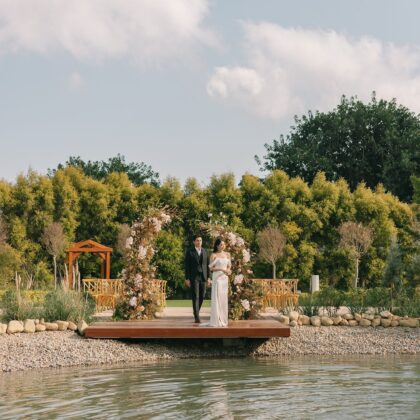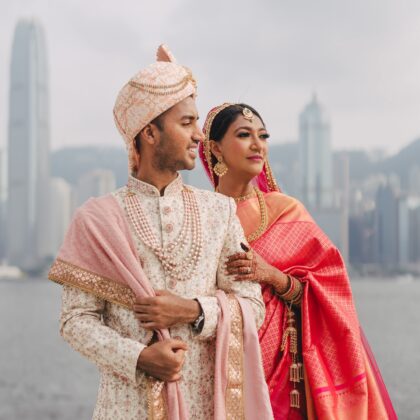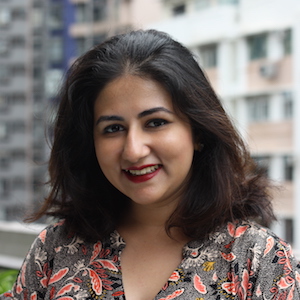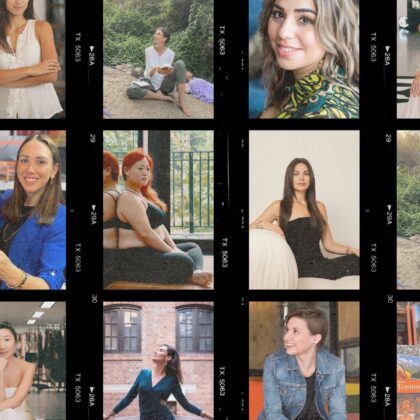We chat to Gemma about her favourite places in Hong Kong, the joys and challenges of working with flowers and what inspires her creatively in our city.
 Fill us in on your background and where you grew up? How did you end up in Hong Kong?
Fill us in on your background and where you grew up? How did you end up in Hong Kong?
I was born in the UK but spent most of my time growing up in Los Angeles. When I was young, my mum took my sister and I on a trip around the world and we each chose a few destinations to visit. One of mine was Hong Kong – I had always been fascinated by the contrast between old and new, and the intensity of living I saw in its photos. It never surprised me that I ended up here!
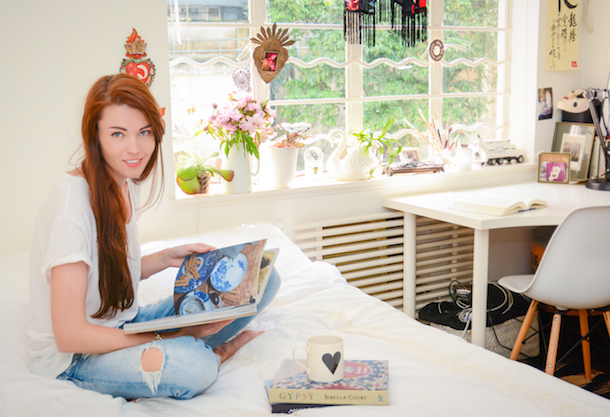 Where do you live? How have you made your home your own?
Where do you live? How have you made your home your own?
I live in an old building in the Mid-Levels, with easy access to Central and the Morning Trail for my dog. Being an old building, we have high ceilings and a balcony that gives me space to work… and of course, it wouldn’t be my home without a huge selection of plants around me!
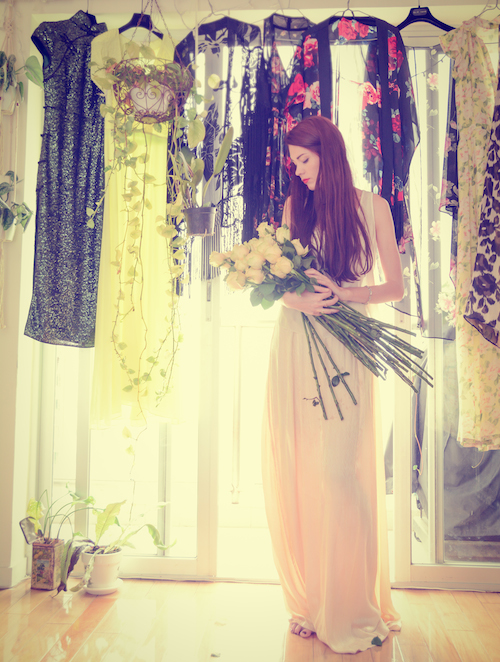 Where do you shop in Hong Kong? Any secret finds you can let us in on?
Where do you shop in Hong Kong? Any secret finds you can let us in on?
The majority of my clothes come from the tailors in Shenzhen. I go to Sham Shui Po all the time on sourcing trips, so I keep an eye out for off-cuts of interesting fabrics; most of the time, I find magazine images I like and have them made. For designer labels, I love Lane Crawford mostly because I like going to check out their latest displays and collaborative projects. I also buy a lot at Me & Gee – dirt-cheap seconds that sometimes need a bit of alteration but they have unbeatable prints! For home décor, almost all of my things come from my travels – a yak skull from Tibet, butterfly cases from Thailand, carvings from Burma, rugs from Nepal….
 What are your favourite restaurants and bars in Hong Kong?
What are your favourite restaurants and bars in Hong Kong?
I miss London a lot when it comes to bars and restaurants but there have been some really exciting new additions recently; Stockton and Ping Pong both add a lot of value to the city. My favourite restaurants would be the high energy, first-come-first serve places like Chachawan, Yardbird and Chom Chom. I love good food and it definitely doesn’t need to be served on a white tablecloth for me to enjoy it – Din Tai Fung and Noodlemi are weekly eats, along with some smaller local joints. The China Club and Mott 32 are my two favourites though – both oozing the magic of the Orient in their own ways. They make me excited to live in Hong Kong.
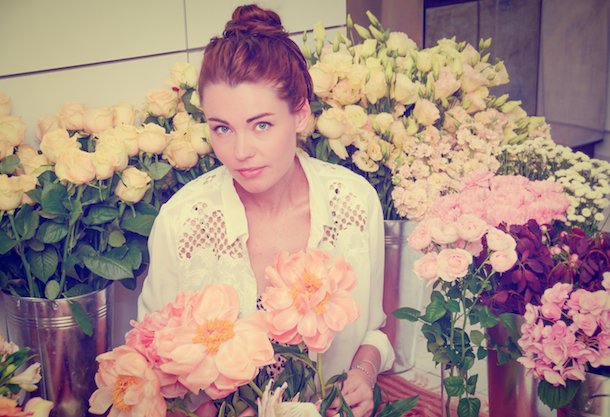 What is your favourite place in Hong Kong?
What is your favourite place in Hong Kong?
Easily the Mong Kok Flower Market. It’s so much calmer than anywhere else in the city, not to mention full of beauty with shops spilling onto the streets full of colour. One of the florists called Hay Fever has a café in the back serving homemade cakes and organic coffee, whilst the bird market at the end of the street is where all the old men sit and admire each other’s prize pets. For me, it’s the closest thing to old Hong Kong – no electrical goods with hands-on merchant selling. Most receipts are scribbled with a pen and there’s always a pot of tea on the table.
 How did you become interested in flowers and botanical art?
How did you become interested in flowers and botanical art?
My great-grandmother was a prize florist who judged at the Chelsea Flower Show. Strangely enough, I never really thought anything of it until I started working more and more with botanicals. I started off in fashion design, graduating with a degree then interning under the late Alexander McQueen. I quickly found myself working in set-design for fashion and ended up specialising in the use of florals. I guess looking back I grew up in a house of plants and a garden of flowers – it just seemed normal to include them in my work.
 How did your fashion background feed into your eventual career as a set designer?
How did your fashion background feed into your eventual career as a set designer?
I didn’t find the right things I was looking for in fashion. As much as I loved fashion design, I soon realised that in reality fashion is more of a business than an art. Most of your time is spent dealing with marketing, PR, quality control and all the other things that are important to getting the design in store. Working on-set gave me the freedom to be more creative using a much wider medium, including fresh flowers, rather than just prints.
 What are your favourite flowers to work with? Are there any that evoke special memories?
What are your favourite flowers to work with? Are there any that evoke special memories?
My work tends to focus more on colour than flower types, but there are definitely types I prefer and most of these are from memories rather than aesthetics. I can’t stand Gerber Daisies; I think this originates to my first job at a pizzeria that had a single stem Gerber on every table! Scented flowers hold a place in my heart, as do deep-coloured petals. My favourite flower is a “Purple Heart” Ranunculus; I’m not a huge fan of purple flowers but these border on being a mysterious, midnight rouge noir.
I like to work seasonally and rarely fly flowers in especially for jobs. If I could, I would forage more than I do but even in HK, it’s possible to look to the local environment – ferns, vines and the HK national flower feature quite regularly in my work.
 What plants are best to press for art? Any tips for DIYers out there?
What plants are best to press for art? Any tips for DIYers out there?
More delicate plants are definitely best as they are easier to dry out; thick waxy leaves can be difficult and take a lot of attention. When selecting plants, look at the structure of the plant and make sure it has a nice balanced look to the leaves and stems, with no damage. A fern is a good starter plant to try.
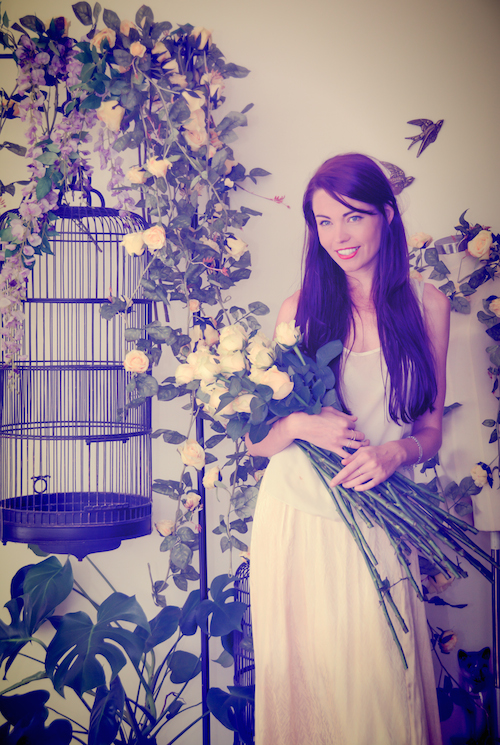 How challenging is it working with things that only have a limited life?
How challenging is it working with things that only have a limited life?
I’ve become hardened to it, especially working with flowers on photo-shoots – most of the time, the way I have to manipulate stems to get the shot means they are pretty beaten up by the end of it anyway! Even though there is always a limited timeframe, there is something very relaxing about flowers; when you know how they react, there is a beauty in their predictability that you won’t find in other materials.
 How do you keep your creative juices flowing?
How do you keep your creative juices flowing?
Travel! I can’t even begin to explain how much inspiration I find on my travels. Whether it’s a train from Shenzhen into China for a few days or further afield, I always visit the local markets to see the flowers and the way they are prepared and used. I also look to art for a lot of inspiration – from the use of colour in classical art to the use of materials in modern installations. I read a lot of fashion and art blogs everyday that provide me with editorial shoots from most of the world’s magazines and I follow international Fashion Weeks to keep an eye on colour trends.
 Fill us in on an average day in the life of a set designer? What are some of your most memorable projects?
Fill us in on an average day in the life of a set designer? What are some of your most memorable projects?
It varies hugely depending on the job. Some of the larger scale jobs are less hands-on as I have production teams working on the set-up, while small ones tend to mean more work for me. My time is split between proposals for clients, preparing budgets, sourcing props, creating, tallying up expenses and documenting the process to help generate more work.
All my projects make me look like a travelling gypsy – I hate to think what passers-by think when they see me bundling hundreds of flowers, odd chairs, buckets of paint and canvases into vans on the street! A lot of set-ups take place overnight so it’s usually a caffeine-fuelled frenzy of petals and paint. My most memorable jobs are always the heavily floral ones that I post lots of pictures of on Instagram.
 What are some of the biggest challenges you have faced in your career and how have you dealt with them?
What are some of the biggest challenges you have faced in your career and how have you dealt with them?
Having the courage of conviction. Every project I do is different and although I learn a lot from each job to take forward, I’m always experimenting. I learnt long ago the importance of confidence towards your own ideas – if you don’t believe in them, no one else will.
 Is it hard to make a living out of being creative?
Is it hard to make a living out of being creative?
It’s hard to get started as everyone expects you to do things for free, but once you get a bit of a portfolio, it’s easier to progress. Creativity is important – but so is meeting the right people and enjoying what you do.
 What advice would you give to someone looking to get into the fashion/design industry?
What advice would you give to someone looking to get into the fashion/design industry?
Get a good foundation under you by doing a course to learn first – either a degree or a short course. From there, it’s all about work experience. Shadow a designer, photographer or artist; they are always in need of assistance and it’s the best way to learn about the industry.
What is the best advice you have received and why?
Smooth seas never made a skilful sailor; it’s an amen to the healthiness of a challenge.
 You have travelled a lot and lived all over the world – what makes Hong Kong unique?
You have travelled a lot and lived all over the world – what makes Hong Kong unique?
The city’s energy – it’s a constant buzz of action. I love it’s “all or nothingness” – densely populated in some areas and then so green and botanical in others. I love that it’s avoided auto-dependant urban sprawl by building vertical instead of horizontal. I also find the colours of the city fascinating; it has a lot of muted dusty pinks, pale blues and cream colours mixed with hits of red and dark green foliage, and I use the skyline at various times of day as colour palettes for my work.
All photos in the That Girl article above were taken by the hugely talented Martice Milton of Martice Milton Photography – get in touch with her at [email protected].
Check out the rest of our That Girls here!




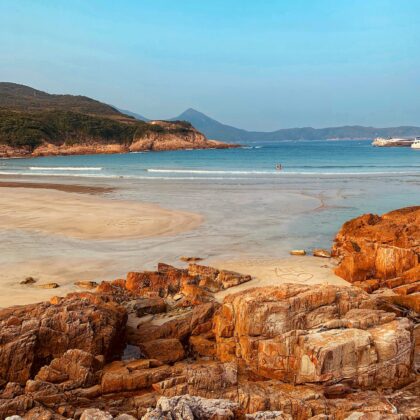
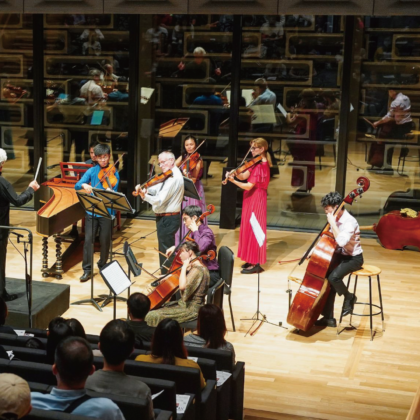
 Eat & Drink
Eat & Drink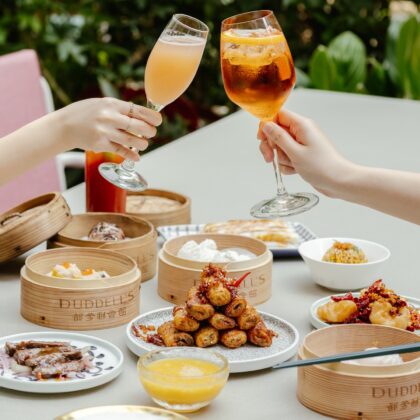
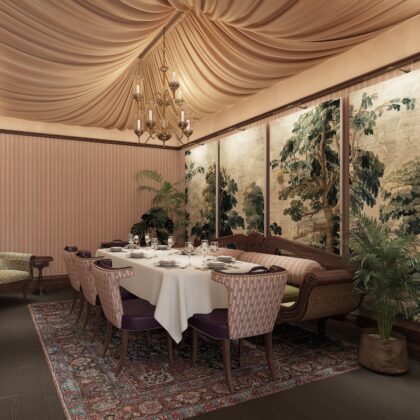
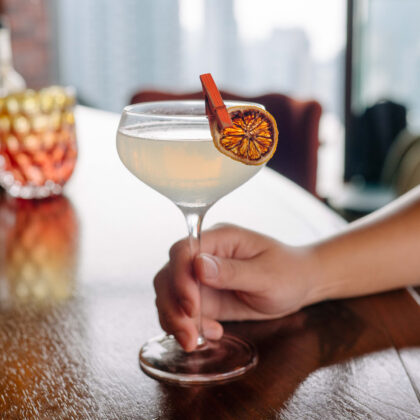

 Travel
Travel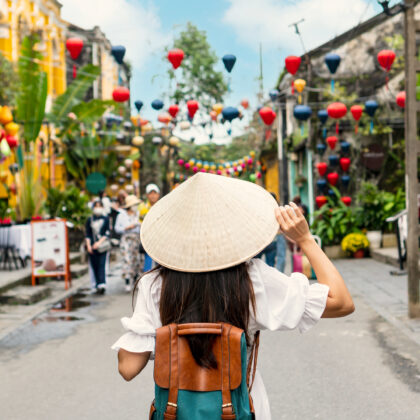
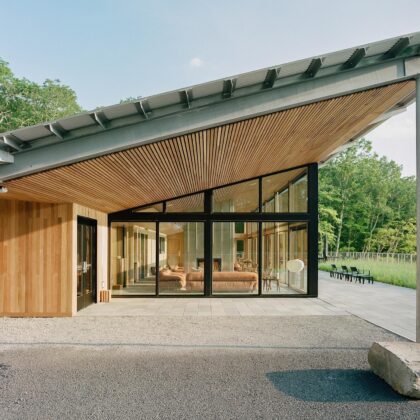

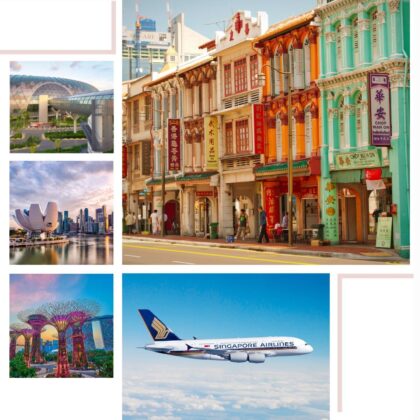
 Style
Style
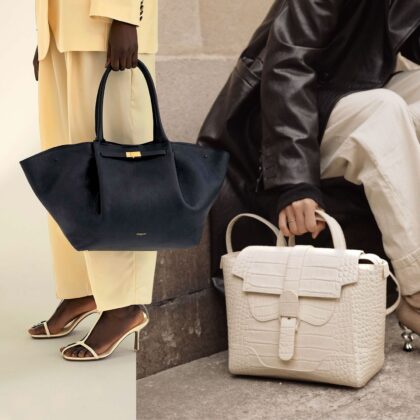
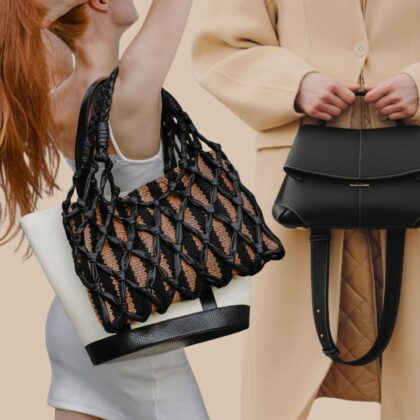

 Beauty
Beauty

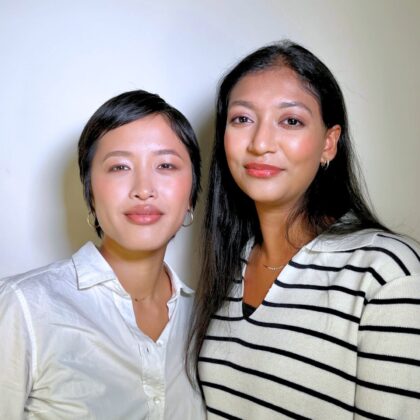
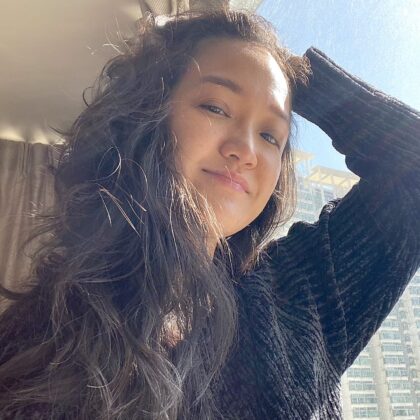
 Health & Wellness
Health & Wellness
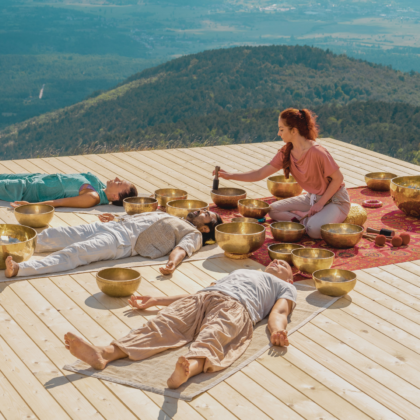


 Home & Decor
Home & Decor
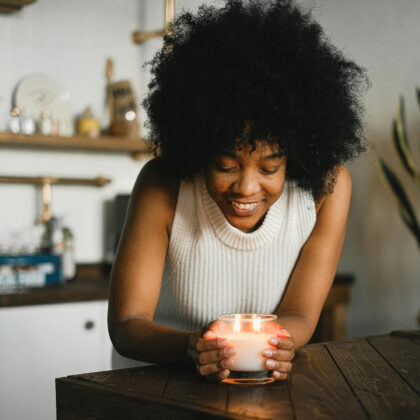
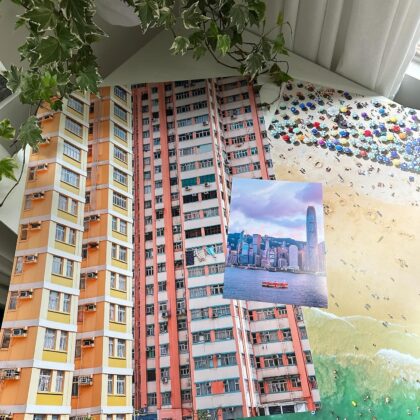
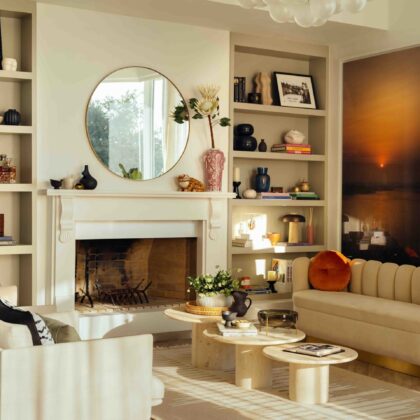
 Lifestyle
Lifestyle

 Weddings
Weddings
